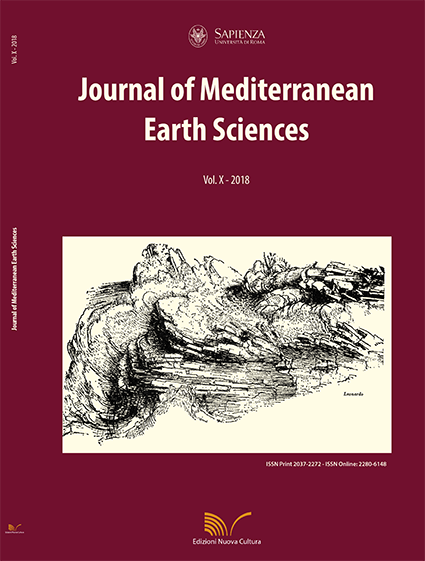Correction factors for the effect of shape and thickness of SEM-EDS microanalysis of asbestos fibres by Monte Carlo simulation
DOI:
https://doi.org/10.3304/JMES.2018.014Keywords:
asbestos, SEM-EDS microanalysis, Monte Carlo simulations, correction factors,Abstract
SEM-EDS quantitative microanalysis of asbestos mineral fibres still represents a complex analytical issue because of the variable fibre shape and small thickness (< 5 µm) compared with the penetration distance of the incident electron beam. Size and shape of micro- and sub-micrometric particles may cause large errors in the quantification due to particle effects on the generation and measurement of X-rays from the sample. These effects are related to the elastic scattering of electrons in the finite size (mass) of the fibre, which is strongly influenced by the average atomic number. The thickness of the particle is key, for a given mean atomic number, with a shape component affecting the absorption and fluorescence contributions to the correction routine. To overcome these issues empirical methods were developed, however they are cumbersome and need characterized standards for thickness, geometry and composition. Here we present correction factors obtained by Monte Carlo analysis for the thickness and shape effect of SEM-EDS and microprobe analysis of chrysotile, crocidolite, amosite, anthophyllite, tremolite and actinolite asbestos. Monte Carlo simulation was used to investigate electron transport, X-ray generation and detection in asbestos bundles and fibres of variable thickness and shape on a pure carbon holder. We report the results obtained on 100 µm long fibres and bundles of circular and square section and thicknesses from to 0.1 µm to 10 µm. Realistic experimental conditions, such as sample geometry, SEM set-up and detector physics were taken into account. An electron probe of 40 nm in diameter was simulated, focussed in parallel illumination onto the surface of the fibre or bundle, in a mid position with respect to the edges. The modelled EDS detector has a resolution of 130 eV measured at Mn Kα, an elevation angle of 40°, and an azimuthal angle of 0°. The influence of thickness and shape on the simulated spectrum was investigated for electron beam energies of 5, 15 and 25 keV. A strong influence of the asbestos fibres and bundles thickness and shape was observed. In general, the X-ray intensities as a function of fibre thickness showed a considerable reduction below about 0.5 µm at 5 keV, 2 µm at 15 keV, and 5 µm at 25 keV, with a non-linear dependence. Specific correction parameters, k-ratio, for the asbestos fibre thickness effect are here presented.Downloads
Published
2018-09-05
How to Cite
Valdrè, G., Moro, D., & Ulian, G. (2018). Correction factors for the effect of shape and thickness of SEM-EDS microanalysis of asbestos fibres by Monte Carlo simulation. Journal of Mediterranean Earth Sciences, 10. https://doi.org/10.3304/JMES.2018.014
Issue
Section
Naturally Occurring Asbestos: state of the art and strategies for investigation and management
License
The submission has not been previously published, nor is it before another journal for consideration (or an explanation has been provided in Comments to the Editor).


